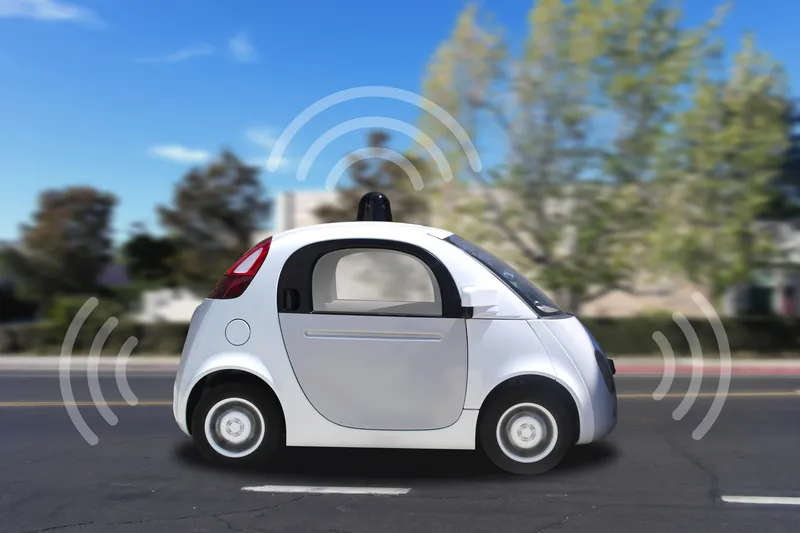A colleague of mine, Mike Woof, the Editor of World Highways magazine, recently attended an open day event at a major ITS research establishment, the object of which was to showcase how the use of in-vehicle ITS technologies could improve fuel consumption and reduce emissions. Mike's expertise brings him into daily contact with the types of plant and equipment used to build roads and, as he related to me afterwards, he'd gone to the event filled with enthusiasm and came away somewhat disheartened.
June 28, 2012
Read time: 3 mins

RSSA colleague of mine, Mike Woof, the Editor of World Highways magazine, recently attended an open day event at a major ITS research establishment, the object of which was to showcase how the use of in-vehicle ITS technologies could improve fuel consumption and reduce emissions.
Mike's expertise brings him into daily contact with the types of plant and equipment used to build roads and, as he related to me afterwards, he'd gone to the event filled with enthusiasm and came away somewhat disheartened.
These days, road-building machinery tends to be highly automated and it uses much with which the ITS professional should be familiar: GPS, cellular communications and so on. The fact is that the construction sector's research into the use of these technologies already stretches back many years and has resulted in solutions with very impressive capabilities which are now field-deployable. That was the root of Mike's gripe; that, cost differential notwithstanding, the 'ITS' in-vehicle solutions on display (and being touted as the 'very latest' and 'best') were really rather crude by comparison with some of the solutions which are now emerging elsewhere. As he noted, modern road construction and mining equipment moves at speed and can now be controlled with millimetre-level accuracy. And it does it all automatically. Now why does that sound so familiar?
When people ask me socially what I write about for a living, and then go on to ask what 'ITS' is, I describe it as, in the main, a bunch of borrowed technologies cobbled together by policy for the purposes of more effective traffic management. By and large, that's not an unfair description - although there is much in the way of technology which is specific to the sector, there is also a huge chunk which has myriad other uses. For instance, the use of CCTV or, increasingly, consumer electronic devices as means of managing networks and distributing information is well documented.
In recent years, we've made some important steps forward in terms of global cooperation and standardisation but Mike's experiences and words have left me wondering if we're not still a little too, well, inward-looking.
Or, to put it another way, I don't think we've yet borrowed enough; I wonder how much of what we spend on research would be better spent on more straightforward information-gathering. If for example we're looking at vehicle autonomy and the road construction and agricultural industries are already using GPS and other technologies to precisely guide vehicles, shouldn't we start by looking there, rather than try to re-invent the wheel ad nauseum?
Over the past couple of years, the structural problems in ITS research have been reported upon several times in this magazine. It's acknowledged that there is duplication. And where there is duplication, there is waste. I've picked on but one example here but when it comes to communicating and sharing information - in many instances, the true currency of ITS - there are many, many others.
At present, in order to secure a more realistic and useful proportion of the governmental money being used to pump-prime faltering economies by investing in infrastructure, we're being challenged to come up with business cases which prove ITS's cost-effectiveness and efficiency. It's a sad irony that we're not always starting at the most fundamental levels - when talking about efficiencies, we tend to talk about matured, deployable solutions. Perhaps it's time to start thinking about pushing things back more and introducing efficiency much further upstream. The downstream effects can only be positive.
Mike's expertise brings him into daily contact with the types of plant and equipment used to build roads and, as he related to me afterwards, he'd gone to the event filled with enthusiasm and came away somewhat disheartened.
These days, road-building machinery tends to be highly automated and it uses much with which the ITS professional should be familiar: GPS, cellular communications and so on. The fact is that the construction sector's research into the use of these technologies already stretches back many years and has resulted in solutions with very impressive capabilities which are now field-deployable. That was the root of Mike's gripe; that, cost differential notwithstanding, the 'ITS' in-vehicle solutions on display (and being touted as the 'very latest' and 'best') were really rather crude by comparison with some of the solutions which are now emerging elsewhere. As he noted, modern road construction and mining equipment moves at speed and can now be controlled with millimetre-level accuracy. And it does it all automatically. Now why does that sound so familiar?
When people ask me socially what I write about for a living, and then go on to ask what 'ITS' is, I describe it as, in the main, a bunch of borrowed technologies cobbled together by policy for the purposes of more effective traffic management. By and large, that's not an unfair description - although there is much in the way of technology which is specific to the sector, there is also a huge chunk which has myriad other uses. For instance, the use of CCTV or, increasingly, consumer electronic devices as means of managing networks and distributing information is well documented.
In recent years, we've made some important steps forward in terms of global cooperation and standardisation but Mike's experiences and words have left me wondering if we're not still a little too, well, inward-looking.
Or, to put it another way, I don't think we've yet borrowed enough; I wonder how much of what we spend on research would be better spent on more straightforward information-gathering. If for example we're looking at vehicle autonomy and the road construction and agricultural industries are already using GPS and other technologies to precisely guide vehicles, shouldn't we start by looking there, rather than try to re-invent the wheel ad nauseum?
Over the past couple of years, the structural problems in ITS research have been reported upon several times in this magazine. It's acknowledged that there is duplication. And where there is duplication, there is waste. I've picked on but one example here but when it comes to communicating and sharing information - in many instances, the true currency of ITS - there are many, many others.
At present, in order to secure a more realistic and useful proportion of the governmental money being used to pump-prime faltering economies by investing in infrastructure, we're being challenged to come up with business cases which prove ITS's cost-effectiveness and efficiency. It's a sad irony that we're not always starting at the most fundamental levels - when talking about efficiencies, we tend to talk about matured, deployable solutions. Perhaps it's time to start thinking about pushing things back more and introducing efficiency much further upstream. The downstream effects can only be positive.










